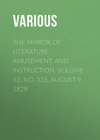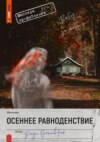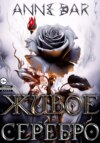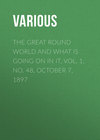Читать книгу: «The Mirror of Literature, Amusement, and Instruction. Volume 12, No. 326, August 9, 1828»
REGENT BRIDGE, EDINBURGH

Edinburgh, "the Queen of the North," abounds in splendid specimens of classical architecture. Since the year 1769, when the building of the New Town commenced, its improvement has been prosecuted with extraordinary zeal; consequently, the city has not only been extended on all sides, but has received the addition of some magnificent public edifices, while the access to it from every quarter has been greatly facilitated and embellished. Of the last-mentioned improvement our engraving is a mere vignette, but it deserves to rank among the most superb of those additions.
The inconvenience of the access to Edinburgh by the great London road was long a subject of general regret. In entering the city from this quarter, the road lay through narrow and inconvenient streets, forming an approach no way suited to the general elegance of the place. In 1814, however, a magnificent entrance was commenced across the Calton Hill, between which and Prince's street a deep ravine intervened, which was formerly occupied with old and ill-built streets. In order to connect the hill with Prince's-street, all these have been swept away, and an elegant arch, called Regent Bridge, has been thrown over the hollow, which makes the descent from the hill into this street easy and agreeable. Thus, in place of being carried, as formerly, through long and narrow streets, the great road from the east into Edinburgh sweeps along the side of the steep and singular elevation of the Calton Hill; whence the traveller has first a view of the Old Town, with its elevated buildings crowning the summit of the adjacent ridges, and rising upon the eye in imposing masses; and, afterwards, of the New Town finely contrasted with the Old, in the regularity and elegance of its general outline.
Regent Bridge was begun in 1816, and finished in 1819. The arch is semicircular, and fifty feet wide. At the north front it is forty-five feet in height, and at the south front sixty-four feet two inches, the difference being occasioned by the ground declining to the south. The roadway is formed by a number of reverse arches on each side. The great arch is ornamented on the south and north by two open arches, supported by elegant columns of the Corinthian order. The whole property purchased to open the communication to the city by this bridge cost 52,000l, and the building areas sold for the immense sum of 35,000l. The street along the bridge is called Waterloo-place, as it was founded in the year on which that memorable battle was fought.
The engraving1 is an interesting picture of classic beauty; and as the "approaches" and proposed "dry arches" to the New London Bridge are now becoming matters of speculative interest, we hope this entrance to our metropolis will ultimately present a similar display of architectural elegance. LONDON, with all her opulence, ought not to yield in comparison with any city in the world; and it is high time that the march of taste be quickened in this quarter.
ON THE DEATH OF CARL MARIA VON WEBER
Weep, for the word is spoken—
Mourn, for the knell hath knoll'd—
The master chord is broken,
And the master's hand is cold!
Romance hath lost her minstrel,
No more his magic strain
Shall throw a sweeter spell around,
The legends of Almaine.
His fame had flown before him
To many a foreign land,
His lays are sung by every tongue,
And harp'd by every hand!
He came to cull fresh laurels,
But fate was in their breath,
And turn'd his march of triumph
Into a dirge of death.
O! all who knew him lov'd him,
For with his mighty mind,
He bore himself so meekly,
His heart it was so kind!
His wildly warbling melodies,
The storms that round them roll,
Are types of the simplicity
And grandeur of his soul.
Though years of ceaseless suffering
Had worn him to a shade,
So patient was his spirit,
No wayward plaint he made.
E'en death itself seem'd loath to scare
His victim pure and mild;
And stole upon him quietly
As slumber o'er a child.
Weep, for the word is spoken—
Mourn, for the knell hath knoll'd—
The master chord is broken,
And the master's hand is cold!
The master chord is broken,
And the master's hand is cold!
PLANCHE.
YOUNG NAPOLEON
(For the Mirror.)
It is impossible at this time of day, to foretell how the future destinies of Europe may be influenced by the subject of these lines. To use the words of the talented author of the Improvisatrice, "Poetry needs no preface." However in this instance, a few remarks may not be uninteresting. Until I met with the following stanzas, I was not aware that Napoleon had been a votary of the muses. He has certainly climbed the Parnassian mount with considerable success, whether we take the interest of the subject, or the correctness of the versification into consideration. Memorials like these of such a man, are, in the highest degree, interesting; they serve to display the man, divested of the "pomp and circumstance" of royalty. That Napoleon had many faults cannot be disputed, but it is equally clear that he possessed many virtues the world never gave him credit for:—"Posterity will do me justice."
I subjoin two translations of the beautiful lines written by Napoleon at St. Helena, on the portrait of his son. The love he bore to his son was carried to enthusiasm. According to those persons who had access to his society at St. Helena, his young heir was the continual object of his solicitude during the period of seven years, "For him alone," he said, "I returned from the Island of Elba, and if I still form some expectations on earth, they are also for him." He has declared to several of his suite, that he every day suffered the greatest anxiety on his account. Since I met with these lines however, I have found that Napoleon had in his youth composed a poem on Corsica, some extracts of which are to be found in "Les Annales de l'Europe" a German collection. He was exceedingly anxious in after life to destroy the copies of this poem which had been circulated, and bought and procured them by every means in his power for the purpose of destroying them; it is probable not a single copy is in existence at the present period. It has been remarked, that, "it requires nothing short of the solitude of exile, and the idolatry which he manifested for his son, to inspire him once more. In neither of the original poems is it indicated which he preferred."
VYVYAN.
TO THE PORTRAIT OF MY SON
Delightful image of my much loved boy!
Behold his eyes, his looks, his cherub smile!
No more, alas! will he enkindle joy,
Nor on some kindlier shore my woes beguile.
My son! my darling son! wert thou but here,
My bosom should receive thy lovely form:
Thou'dst soothe my gloomy hours with converse dear:
Serenely mild behold the lowering storm.
I'd be the partner of thy infant cares,
And pour instruction o'er thy expanding mind;
Whilst in thy heart, in my declining years,
My wearied soul should an asylum find.
My wrongs—my cares—should be forgot with thee,
My power—imperial dignities—renown—
This rock itself would be a heaven to me;
Thine arms more cherished than the victor's crown.
O! in thine arms, my son! I could forget that fame
Shall give me, through all time, a never dying name.
(Signed.) NAPOLEON.
Another version is subjoined of lines, "To the Portrait of My Son."
O! Cherished image of my infant heir!
Thy surface does his lineaments impart:—
But ah! thou liv'st not. On this rock so bare
His living form shall never glad my heart.
My second-self! how would'st thy presence cheer
The settled sadness of thy hapless sire!
Thine infancy with tenderness I'd rear,
And thou should'st warm my age with youthful fire.
In thee, a truly glorious crown I'd find;
With thee, upon this rock a heaven should own:
Thy kiss would chase past conquests from my mind,
Which raised me demi-god on Gallia's throne.
(Signed.) NAPOLEON.
THE COLOUR—BLUE
(To the Editor of the Mirror.)
Observing in Number 323 of the MIRROR, an article respecting blue, as the appointed colour for the clothes of certain descriptions of persons, it may, perhaps, not be wholly irrelevant to observe that Bentley, in his "Dissertation on Phalaris," page 258, mentions blue as the costume of his guards, and quotes Cicero's "Tusculan Questions," lib. 5, for his authority. I cannot at present turn to the passage in Cicero, but Bentley's quotation may surely be accepted as evidence of the existence of the passage.
Twickenham. H. H.
EXTRAORDINARY CRIMINALS
(For the Mirror.)
On the trial of Henry Marshall, Dec. 4, 1723, for murder and deer-stealing, a very remarkable circumstance took place. Sentence of death had no sooner been pronounced on this offender, than he was immediately deprived of the use of his tongue; nor did he recover his speech till a few hours preceding his execution.
G. W. N.
July, 1736—Reynolds, condemned upon the Black Act, for going armed in disguise, in pulling down Lothbury turn-pike, with one Baylis, (reprieved, and transported for 14 years,) was carried to Tyburn, where, having prayed and sung psalms, he was turned off, and being thought dead, was cut down by the hangman as usual, who had procured a hole to be dug at some distance from the gallows, to bury him in; but just as they had put him into his coffin, and were about to fasten him up, he thrust back the lid, and to the astonishment of the spectators, placed his hands on the sides of the coffin in order to raise himself up. Some of the people, in their first surprise, were for knocking him on the head; but the executioner insisted upon hanging him up again; when the mob, thinking otherwise, cried, "Save his life," and fell upon the poor executioner, (who stickled hard for fulfilling the law,) and beat him in a miserable manner; they then carried the prisoner to a public-house at Bayswater, where he was put to bed; he vomited about three pints of blood, and it was thought he would recover; but he died soon after. The sheriffs' officers, believing the prisoner dead, had retired from the place of execution before he was cut down.
Sept. 3, 1736.—Venham and Harding, two malefactors, were executed this day at Bristol. After they were cut down, Venham was perceived to have life in him, when put in the coffin; and some lightermen and others, having carried him to a house, a surgeon, whom they sent for, immediately opened a vein, which so far recovered his senses, that he had the use of speech, sat upright, rubbed his knees, shook hands with divers persons he knew, and to all appearance a perfect recovery was expected. But notwithstanding this, he died about eleven o'clock in great agony, his bowels being very much convulsed, as appeared by his rolling from one side to the other.
It is remarkable also, that Harding came to life again, and was carried to Bridewell, and the next day to Newgate, where several people visited him and gave him money, who were very inquisitive whether he remembered the manner of his execution; to which he replied, he could only remember his having been at the gallows, and knew nothing of Venham being with him.
G. K.





















